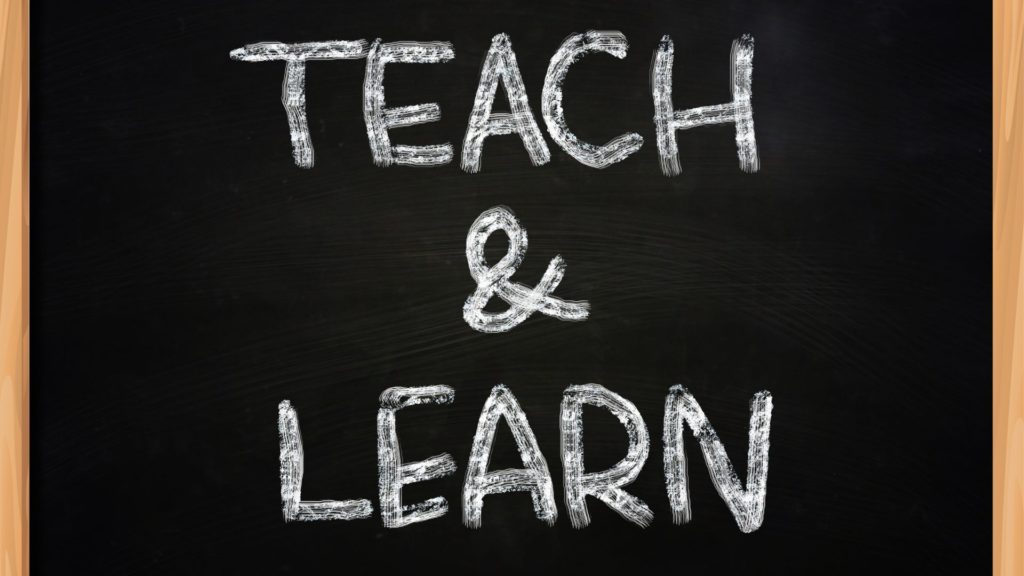The relationship between teaching and learning is that, one is about giving information and other is about receiving it, but they are like two sides of the same coin.
Good teaching is not just about giving information, it is also about understanding how students learn best and then changing the way of teaching to help them. At the same time, the way students learn can help teachers improve their different teaching methods. In this blog, we’re going to look at how teaching and learning work together.
What is Teaching?
Teaching is the process of sharing knowledge, skills, or information with others to help them learn and understand new things. The process of teaching involves a teacher who guides students or learners through lessons, activities, and discussions.
The role of a teacher is not just defined by giving facts or information, it is also about inspiring and motivating students to learn, help them understand complex concepts and encourage them to think critically. When a teacher teaches, it becomes their responsibility to create an environment for students where they feel safe to ask questions and explore new ideas.

What is Learning?
Learning is a process by which individuals acquire new knowledge, skills, behaviors, or values. Learning is not just about memorizing or remembering facts, it is about understanding new concepts, developing skills and changing the way we think, feel or behave.
Everyone learns differently, they have their own pace of learning in their own style. It is a lifelong journey that helps an individual to grow and adapt to the changes and understand the world around them.
What is The Relationship Between Teaching and Learning?

The relationship between teaching and learning process is highly interconnected, with each influencing and supporting the other.
Complementary Roles
Teaching is about sharing knowledge and skills, while learning is about receiving, understanding, and applying them.
Feedback Mechanism
In terms of feedback mechanism, the relationship between teaching and learning is that in the teaching process, responses and achievements from learners provide feedback for teachers to adjust their methods. Whereas, continuous assessment in learning helps in modifying teaching strategies for better understanding and engagement.
Adaptation and Personalization
Teachers adapt to their methods of teaching so that they can suit various learning styles and abilities, enhancing individual learning experiences. Learners’ unique ways of understanding information influence how teachers present and structure their lessons.
Collaborative Environment
Another relationship between teaching and learning is in terms of a collaborative environment. Learning often thrives in a collaborative environment fostered by teaching that encourages interaction and discussion. Group learning activities reflect the mutual influence of teaching and learning in a shared space.
Professional Development and Lifelong Learning
In the teaching profession, the growth is influenced by the experiences in facilitating learning. Lifelong learning for both teachers and students is a testament to the continuous cycle of teaching and learning.
Emotional and Psychological Aspects
Emotional intelligence in teaching helps in understanding and responding to learners’ needs.
Whereas, learning is not just cognitive but also emotional, influenced by the empathy and support of teachers.
In essence, teaching and learning are not isolated processes but are deeply woven into the fabric of education, each constantly shaping and enhancing the other.
Difference Between Teaching and Learning
| TEACHING | LEARNING |
| Teaching is an act of sharing knowledge, skills and values with others. | Learning is a process where a learner acquires knowledge, skills and values. |
| It involves planning, strategizing and presenting. | It involves active and passive absorption of information, along with processing knowledge. |
| Teachers are responsible for controlling the flow of information, pace and structure of the teaching process. | Learners control their engagement, interpretation and application of information. |
| In the process of teaching, the interaction is often one-way, from teacher to student, but can be interactive. | Primarily internal, within the learner, but can involve interaction with teachers and peers. |
| A teacher is responsible for providing clear, accurate and engaging material. | A learner, on the other hand, should pay attention, understand and apply knowledge responsibly. |
Conclusion
Now that you are clear with the relationship between teaching and learning, you know that it is a dynamic and ever-evolving interplay that forms the basis of education. Effective teaching significantly enhances the learning process.
Both teaching and learning impact each other and their relationship is key to fostering an educational environment where both teachers and students can thrive and achieve their fullest potential.
Relationship Between Teaching and Learning FAQs
A1. The effectiveness of teaching greatly influences the quality of learning, and feedback from the learning process can refine and enhance teaching methods
A2. Visual (learning by seeing), auditory (learning by hearing), kinesthetic (learning by doing), and reading/writing (learning by reading and writing).
A3. Both teaching and learning are similar in their goal to enhance knowledge but differ in roles: teaching is active dissemination, learning is active acquisition.
A4. There are several teaching methods, such as, direct instruction, inquiry-based learning, cooperative learning, and blended learning.
A5. Factors affecting learning include the learner’s cognitive abilities, motivation, learning environment, teaching methods, and socio-emotional factors like stress and support systems.




